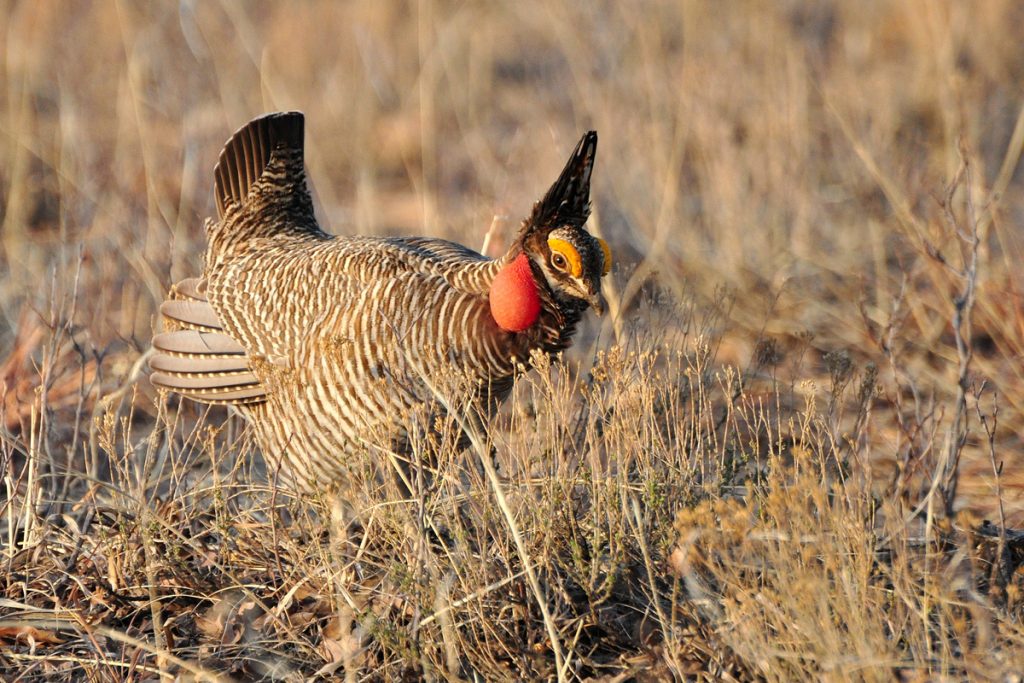
To ring in the new year, I thought I’d catalog some of last year’s victories for bird conservation. While birds have been losing their numbers, we should remember that conservation efforts absolutely work to bring them back, and we ought to celebrate these victories for the hope they represent.
Last year I wrote about the decades-long legal battle to list the Lesser Prairie Chicken under the Endangered Species Act. In November the Fish and Wildlife Service finally acted, listing two population segments under the act. The northern population segment, encompassing territory in Colorado, Kansas, Oklahoma, and Texas, has been listed as “Threatened” while the southern population segment in New Mexico and Texas has been listed as “Endangered.”
These listings will provide crucial protections for this southwest icon and are the result of persistent effort on the part of Wild Earth Guardians and the Center for Biological Diversity (CBD). The Center for Biological Diversity first petitioned the FWS in 1995 to list the chicken as “Threatened.” In a press release, CBD representative Michael Robinson celebrated the “terrific news” of the listings but lamented how long it took to finally get these protections, saying “We wish that the Fish and Wildlife Service hadn’t delayed this protection for 27 years, because quicker action would have meant a lot more Lesser Prairie Chickens alive in a lot more places today.” These new protections will set regulations on livestock grazing within the chicken’s habitat and limit oil rig development, a primary cause of habitat loss for the endangered bird.
While these new protections are a great step in direction of conserving prairie chickens, the North American Grouse Partnership cautions that “The U.S. Fish and Wildlife Service cannot recover lesser prairie-chickens with regulations” and that the bird is around today thanks to “caring private landowners who steward nearly all the remaining habitat.” The Conservation Ranching Initiative was launched by the Audubon Society in 2017 and today 99 ranchers across 15 states partner with the program.
Wild Earth Guardians also won a victory for clean air in southeastern New Mexico, settling a case with oil and gas company OXY. This settlement includes a $500,000 penalty, a $500,000 investment into air quality improvement projects and $5.5 million for emissions prevention at OXY’s southeastern facilities. Cleaner air is a big win, not just for birds but for all animals, including people: a 2021 study by McGill University found that air pollution leads to 50,000 premature deaths in the United States.
Finally, thanks to the efforts of conservationists across the U.S., the Audubon Society reports that waterbirds and ducks in the U.S. have increased by 18 percent and 34 percent respectively since 1970. While this news is overshadowed by the fact that more than half of U.S. bird species are declining, it offers a glimmer of hope in the fact that conservation does work and that these species can be saved. We can all play a part in saving these beautiful creatures for our posterity to enjoy. Hanging a bird feeder, cleaning trash out from trails, giving to conservation groups — together these actions secure a future for our feathered friends.
Author
-

Bryce Flanagan moved from Sacramento, CA to Taos County in 2016, and has lived in Questa for two years. He's passionate about the unique and beautiful wildlife of our state and is a regular contributor to the Questa Del Rio News.
View all posts



